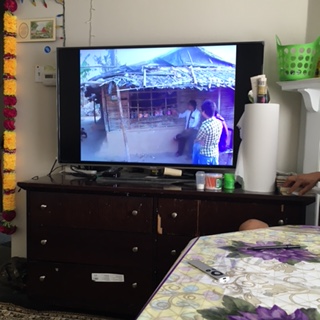Each week, I open up the thesis proposal I wrote in March to re-evaluate my research goals and scroll down to the timetable that I’d created with my adviser.
Looking at it, I’m realizing that I need to adjust the deadlines I’d set for myself. There were several unanticipated bumps along the road that had kept me from completing the bulk of my fieldwork for my research by the end of September.
I felt disappointed and frustrated. Now that I had classes Monday through Friday, I wondered whether or not I could make up for a few months of fieldwork. For days, I contemplated over how I would reallocate my timetable and it proved to be extremely difficult. Without any data, I struggled to imagine the extent of my abilities to conduct interviews while juggling classes. It’s easy to schedule in time where I work on my literature review and put together my poster for a presentation for a Dietrich College Family Weekend event, but the interviews will require a few hours that include commute time, the actual duration of the interview and the time it will take for me to transcribe the recorded interview and reflect on the interviews as part of the analysis.
The longer I wait for the IRB to approve of my study, the more anxious I am. Whenever anyone asks me how my research is going, I feel a knot in my stomach because all I’ve accomplished in the last week is adding a few more articles to my annotated bibliography.
I still see my FORGE family on the weekends and it’s amazing how a few hours with them helps me relax. I relax because the conversations I have with them are not about my research. I relax because I can sit on their couch with them and watch Hindi movies without subtitles. I relax because they’re looking forward to celebrating the upcoming Nepali holiday. I relax because being present with them reminds me why I was motivated in the first place to pursue my thesis.
I’m looking forward to my weekends as soon as my IRB proposal is approved, because I will be having conversations with a community that reminds me of the importance of the present.
It’s ironic to me that as I constantly think about narrative inquiry, one of the methods I am using for my research, I realize that it’s much easier to talk the talk than walk the walk. Narrative inquiry is a methodology that encourages researchers to value the lived experiences of their subjects.
Lekkie Hopkins, who advocates using narrative inquiry in refugee research, wrote, “Researchers must understand that if storying is to grapple with the richness and complexity of lived experience, it will probably be chaotic and messy, as well as clear and straightforward. Researchers wanting to investigate the sociology of refugee experiences might be well advised to ensure that the stories they gather from research participants are not too neat, too straightforward, too much reduced to bare essentials in their telling, lest the chance to allow the stories to become personally and politically resonant be lost.”
I remember reading Lekkie Hopkins in March of this year and interestingly, I’m looking back at her abstract and making a connection to my own narrative as well as the narratives of the refugees I hope to hear soon. My own narrative, or my own lived experience, will be messy and chaotic at times and that’s how it should be.
I know that this sounds cliché, but it really is important to live in the present. Too much time is spent organizing, and reorganizing, my Google calendar. I’ve adjusted my timetable, come to terms with it and moved on.



You must be logged in to post a comment.